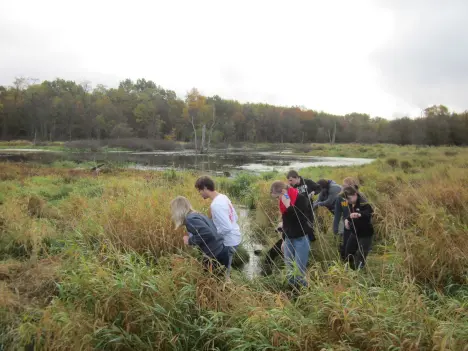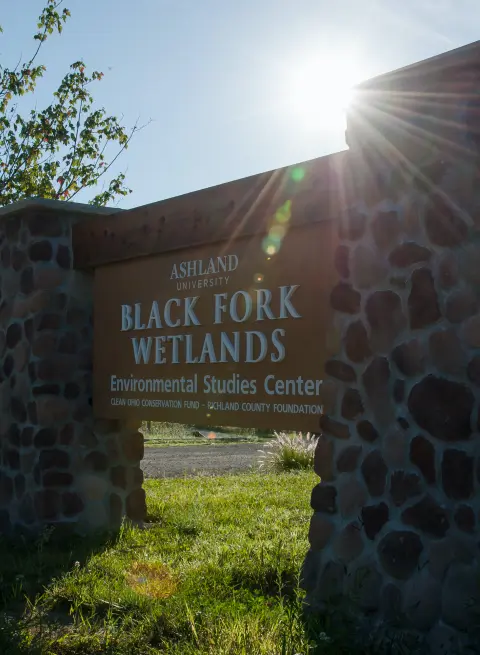
In 1998, with the help of an anonymous donor, Ashland University purchased 38 acres of wetland six miles south of campus, on U.S. 42. The region, called the Black Fork Wetlands, is rich in flora and fauna and serves as a vital environmental preserve. Here, students study local wildlife in their natural habitat and observe trends and changes in the ecosystem. In 2004, through grants provided by the Clean Ohio Conservation Fund and the Richland County Foundation, an additional 260 acres were added—and in 2017, the Norris family, who sold 120 of those same acres in 2004, added seven more.
Today, at 305 acres, the Black Fork Wetlands is the largest of Ashland University's five environmental preserves. Students from the College of Arts and Science and College of Education study the plants and animals that call this region home. They do so with the help of the Black Fork Wetlands Environmental Studies Center.
Since its official formation in April 2005, the Black Fork Wetlands Environmental Studies Center has contributed to the creation of the off-the-grid Wetlands Classroom and the construction of features in the preserve, including a 400-foot boardwalk and observation tower.
The goals and vision for the Black Fork Wetlands Environmental Studies Center include:
- Conservation of critical habitats
- Public and K-12 school outreach
- Development and implementation of an interpretive center
- Field research and teaching by environmental science faculty
- Field research and education for post-secondary students
- Field teaching by science education faculty
Conservation
The Black Fork Wetlands Preserve is, as you might expect, a wetland. Wetlands are regions that are flooded with water for much, if not all, of the year. As a result, they have the highest biological productivity of terrestrial habitats outside of rainforest areas. Hundreds of species live in the preserve, but commonly-observed animals include beavers, trumpeter swans, bald eagles, soras and sandhill cranes. These animals live in different habitats throughout the Black Fork Wetlands Preserve, including buttonbush swamps, swamp forests, marshes, riparian corridors and upland areas.
Wetlands provide valuable ecosystem services. Floodplain areas help slow, absorb and filter water moving downstream during periods of high water. The Black Fork Wetland Preserve’s growth from 38 to 305 acres lessens its susceptibility to outside activities that might affect it. Its size also provides many animal species with the large territories required for population maintenance.
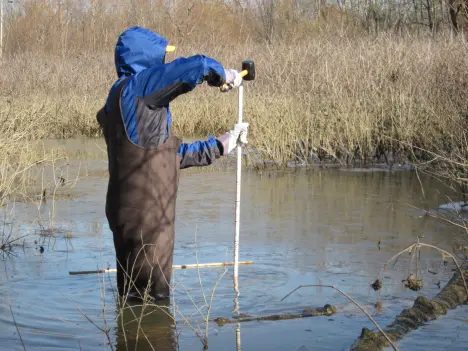
Facilities
Access to the Black Fork Wetlands Preserve has been improved by the development of parking and boardwalk access near Rt. 42. Additions by the environmental studies center include an observation tower, a deck to accommodate large groups and 400 feet of boardwalk into a marsh adjacent to the Black Fork of the Mohican River.
In 2012, grants from the Crawford-Richland Central Labor Council and the Sisler-McFawn Foundation funded further growth of the environmental studies center. The Wetlands Classroom, an eco-friendly building adjacent to parking and the boardwalk, provides additional educational opportunities.
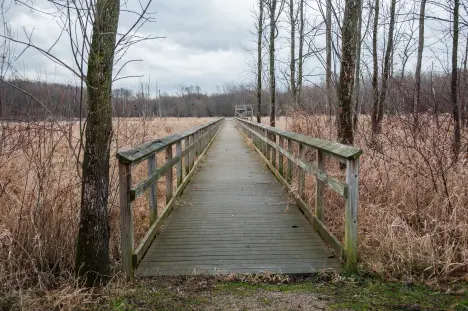
Research
Ashland University undergraduate students and science faculty have been using the Black Fork Wetlands Preserve for research projects since 1998. Investigators from other universities have also visited the site for their own ecological studies. Examples of research performed in the preserve include:
- Territorial behavior and movement patterns of soras and Virginia rails.
- Plant diversity and community structure as an index of wetland quality.
- Vegetation change in marshes invaded by reed canary grass.
- Microbial diversity and ecology of aquatic habitats.
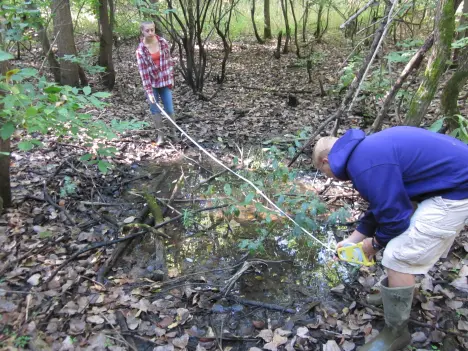
Community Outreach and K-12 Education
Residents and visitors love to visit the Black Fork Wetlands Preserve for activities such as birdwatching, photography, geocaching and nature breaks.
Since 2005, the Black Fork Wetlands Environmental Studies Center has hosted student education and teacher training groups. Reach out to us to set up a visit.
The Naturalist on Duty program offers short programs and informal learning options in an open-house format. Ashland University environmental science faculty collaborate with Ohio Certified Volunteer Naturalists to host visitors and provide educational opportunities. These events are held on Saturdays once per month during the warmer periods of the year.

Citizen Science
“Citizen science” is the term used to describe science projects submitted by citizens from the community. The Christmas Bird Count, coordinated by the National Audubon Society, may be a familiar example.
The growing number and diversity of citizen science projects is a huge opportunity, both for the Black Fork Wetlands and the people that surround it. Students and citizens of all ages can get involved in scientific efforts that have an actual impact, learn how science uses small observations to tackle big questions and discover the truths of the world around them.
